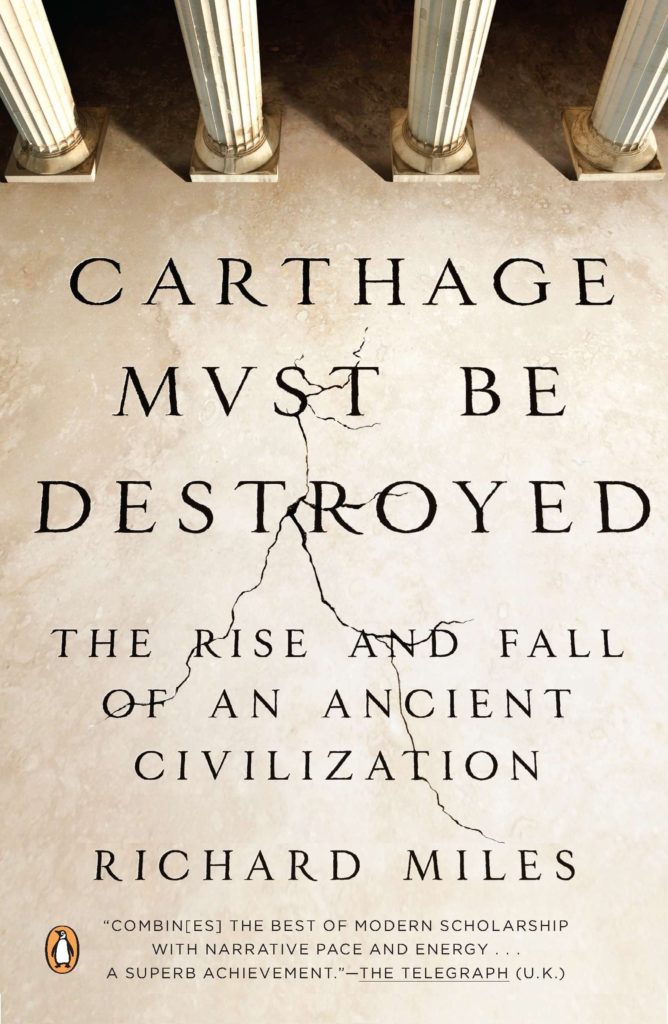Carthage Must Be Destroyed

To the victor go the spoils, or so it is said. That much, at the very least, is true when it comes to Rome vs. Carthage – the contest between the superpowers of the ancient Mediterranean. The virtually complete destruction the Carthaginians at the end has meant that only Rome has really told the story of their greatest rival. Richard Mills’ “Carthage Must Be Destroyed” does an outstanding job of piecing together what is known, but, at the end, there are almost as many unknowables as there are answers.
For example, where did Carthage come from? Even the origin story of the city and its civilization come from Roman sources. Although the city was probably found by Phoenicians, and likely Tyre, the simple fact is that we will probably never know for sure.
What we can say is that, for almost 600 years Carthage was a thriving and successful civilization, and that the three Punic Wars between Carthage and Rome left a deep and profound impact on the Romans. The fact that little is left, at least that was not repurposed by the Romans, is testament to the Roman stubbornness and vengeance. Mills’ book even takes its title from a line which the famous Roman Cato would close every speech he made before the Senate; “Furthermore, I believe that Carthage must be destroyed“. While Rome may not have gone so far as to salt-the-earth over ruins of the city, the obliteration of Carthage was thorough just the same.
Mills is able to pull together a myriad of strands, from mostly unreliable authors, together with what physical evidence remains and weaves together the most-likely truths about Carthage that we can know. Given the limits of Carthaginian scholarship, it is a fascinating read for anyone interested in ancient history.





 RSS - Posts
RSS - Posts